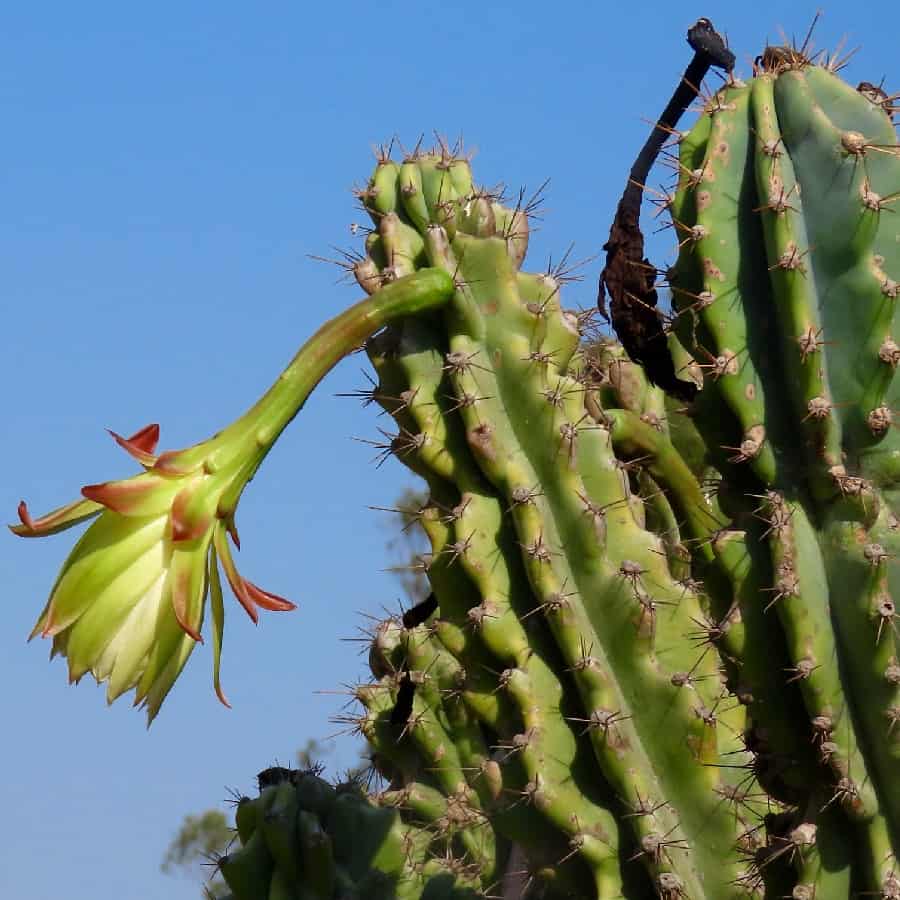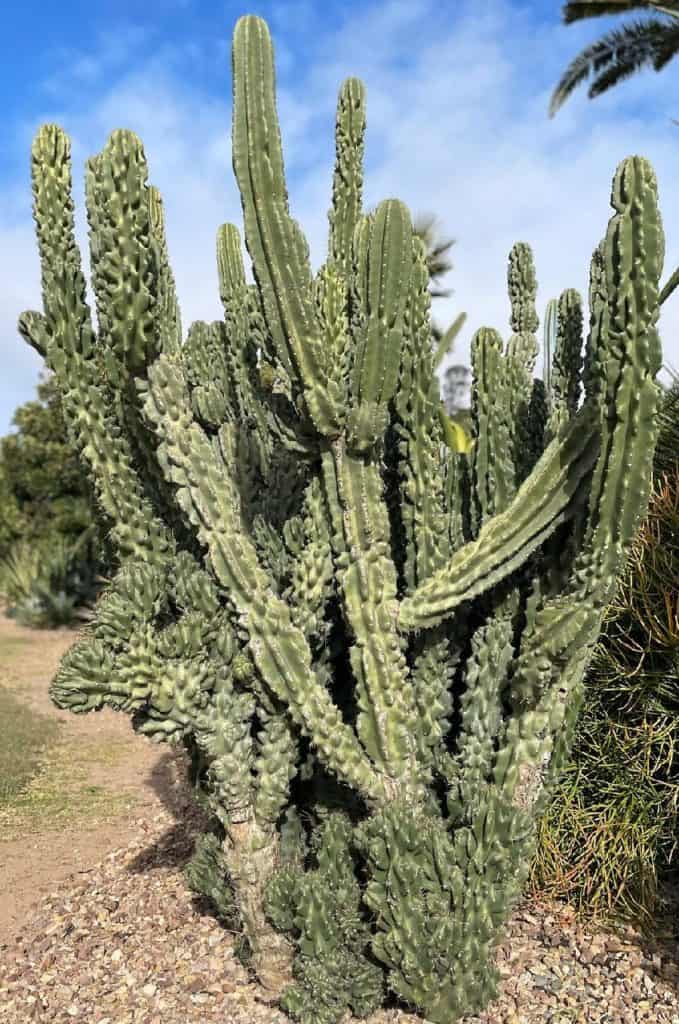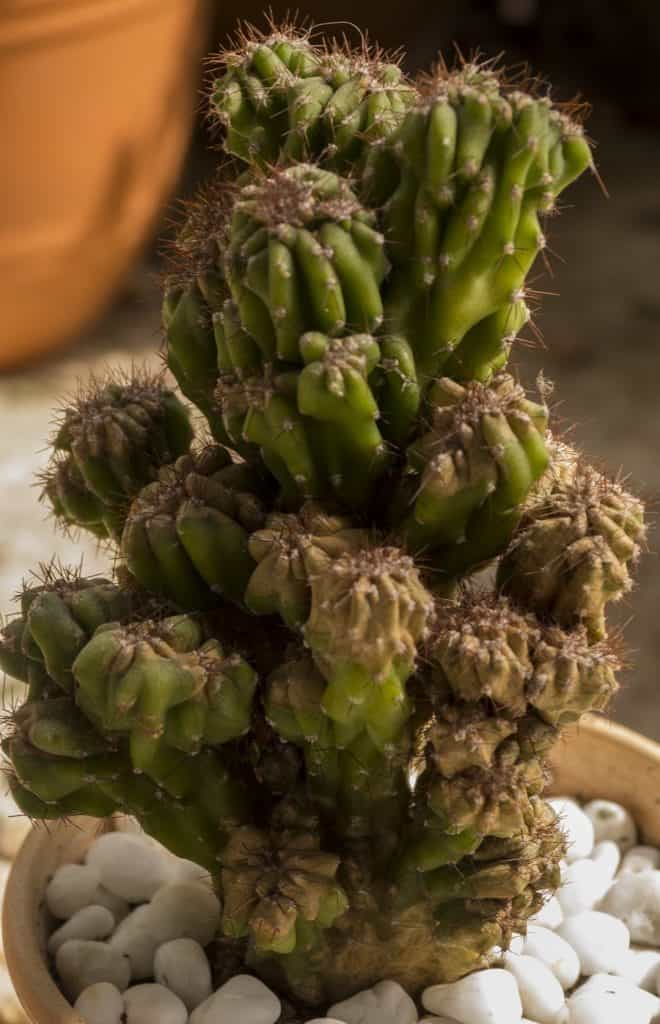Cereus Peruvianus Monstrose: Characteristics and Care
Cereus peruvianus monstrose is an extraordinary type of cactus that belongs to the Cactaceae family. It originally comes from Brazil, the Caribbean, and other cool places in South America. People often call it by different names, like Cereus monstrose, Monstrose Apple Cactus, Peruvian Apple Cactus, or even the cool-sounding Curiosity Plant.
Picture this cactus growing up tall, just like a tree! Its stems have a lovely gray-green color and are ribbed, meaning they have these cool lines along their length. But what makes them really special is that as they grow, some of the stems twist around in unexpected ways. Can you imagine that? And when it’s time to blossom, this cactus shows off beautiful white and pink flowers that are a sight to behold. But here’s the exciting part: it also bears these yummy red fruits that are perfectly round and totally edible. How amazing is that?!

Related Post:
11 Cereus Cactus Types With Pictures
Contents
How To Care For Cereus peruvianus monstrose
Planting and Sunlight
To ensure the well-being of your Cereus Peruvianus Monstrose, it’s essential to choose the right location for planting. Avoid colder areas with temperatures below 50°F. These cacti thrive in direct sunlight, so place them in bright locations with intense sunlight. Steer clear of low-light areas, as Cereus Peruvianus Monstrose needs plenty of light to flourish. Additionally, provide an airy environment while ensuring the air currents are not cold to maintain optimal growth.

Watering and Humidity
Proper watering is crucial for Cereus Peruvianus Monstrose. They are sensitive to excessive humidity, which can even lead to their demise. Instead of frequent small waterings, it’s better to water generously but infrequently. Water the soil directly rather than pouring water onto the cactus. During the hot season, wait until the soil is completely dry before watering, while during colder seasons, water sparingly. Be cautious to prevent waterlogging at all costs.
Soil and Fertilization
For successful cultivation, choose well-draining soil to avoid excessive moisture that can harm the plants. A suitable mixture can include compost or peat with the addition of one part coarse sand to two parts soil. Fertilize your Cereus Peruvianus Monstrose with regular cactus or flower fertilizer during the main growing period, ensuring the concentration is not too high.
Propagation and Growth
Cereus Peruvianus Monstrose exhibits rapid growth under ideal conditions, reaching heights of up to 6.5 feet and blooming continuously. You can propagate them through seeds or cuttings. If propagating with cuttings, plant sections of the stem in a mixture of 50% peat and 50% sand. Maintain slight moisture, provide appropriate temperature, and ensure adequate light conditions for successful growth.
Repotting
Due to the rapid growth of Cereus Peruvianus Monstrose, repotting is necessary approximately once a year. In early spring, carefully remove the cactus from its pot and check the root ball. If well-rooted, transfer it to a slightly larger pot. Handle the roots gently, avoiding damage or breakage.

Dormancy and Winter Care
During the dormant period in winter, Cereus Peruvianus Monstrose requires minimal watering, ensuring the substrate doesn’t completely dry out. Place the cacti in a cool location with temperatures around 50°F. They can tolerate temperatures as low as 32°F.
Pest Control
Cacti in hot and dry winter climates are susceptible to mites, which can be recognized by the presence of webs in the leaf axils and along the leaf edges. Keep an eye out for mealybug infestations characterized by small white, cotton-like masses on the cactus. Applying pest control measures, such as fumigation, a couple of times a year helps prevent fungal issues and keep the plants healthy.
